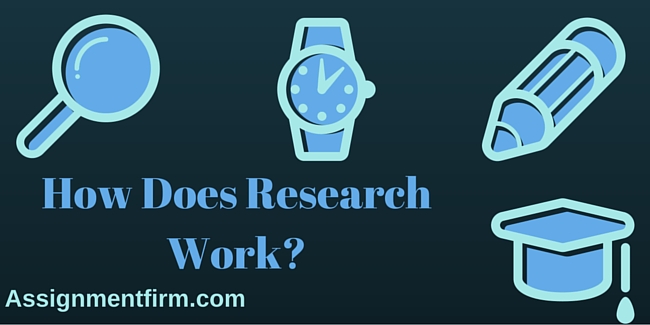The Research Cycle 1
-
You Have An Idea
Question stem from your idea and you want answers to obtain your goal. You realize research is necessary and begin to develop a plan.
-
Form Teams
You seek our people that believe in and share our idea, and are willing and able to contribute unique expertise.
-
Project Development
You discuss specific project objectives and methodological details with your team.
-
Proposal Development
After much planning and preparation, you develop and submit a grant proposal to fund your research.
-
Carry Out Work
If awarded your grant proposal, you and/or a team begin to complete the needed research to obtain your goal.
After you’ve completed your work, you analyze your research research result. Often, this leads to more ideas and/or questions.
If not awarded, you go back to the beginning of the cycle to refine the idea.
Anatomy of a Grant Proposal
Below is an outline of the typical sections of a federal grant proposal. Please refer to your program guidelines for details about page limits, formatting requirements, etc..
Answer These Questions:
WHAT will be done?
WHY does it need to be done?
HOW will your work done?
WHAT has Already Been done?
WHO will do the work?
HOW MUCH will it cost?
Cover Sheet: Application form for the agency.
Project Summary: Overview of the proposed project.
Table of Contents: List of proposal sections and the length of each section.
Project Description: Clearly states why this work needs to be done., your goals and objectives, background research, your research method and the expected outcome. Can include graphs to explain your project and it should be visually appealing.
References: Any work cited in your proposal description.
Biographical Sketches: Similar to curriculum vitae, but more like a brief summary of your professional and/ or educational achievements. Highlights your experiences in the field and any relevant publications or projects you’ve contributed to.
Budget: States how much the project will cost and includes a justification of these costs. Make sure your numbers add up!
Support: Explains the current and pending grant support. Shows that the project isn’t funded elsewhere.
Facilities: Explains where the work will be done. If the proposal permits, include pictures to show what equipment your will use. States what other resources you have, also.
Supplementary Documentation: Includes Letters of Commitment and Letters of Support. The first is a statement of active participation in the project. The second demonstration the approval of your project from supporters.
Did You Know?
The University of Masscult office of Research Website has a database that contains model proposals that have been previously submitted. If you’re a Mizzou student or employee you can access the files at Research Masscult edu.
Writing A Proposal? Know the Lingo.
These simple (and often overlooked!) tips will help make your submission more successful.
Grant:
Money, property or technical assistance awarded by a government agency or private organization to an eligible applicant to accomplish a purpose or project as proposed in the application.
Guidelines:
Formal announcement issued by a sponsor (private or public) letting individuals know that it’s looking for proposal for funding in specific topic or program areas.
Key Personnel:
Anyone on your project who is an intellectual contributor and difficult to replace. Usually faculty, but may be specially trained staff. Includes PI and co-Pls. (PD and co-PD)
OSPA: Office of Sponsored Programs Administration; reviews, signs and submits all proposals. The Only department in the line with authority to commit the institution.
Program Officer: Sponsor employee who manages the portfolio of grants for that grant program. (Program Manager, Program Leader, National Program Leader)
Sponsor: Also known as funder, funding agency, grantor, granting agency. Can be public (federal, state, local) or private (foundation, industry).
Writing a Proposal: The Process
- PI/Team Prepares Proposal: After forming a concrete idea the PI spends typically 3-6 months finding a grant sponsor and writing a proposal
- Proposal Entered Into Database: Both the budget portion and abstract are entered.
- Signing/Approvals: Anyone involved in the process has to sign it (named personnel, department chairs, deans).
- Forwarded to Ospa: The Office of Sponsored Programs Administration (Ospa)
- Reviews, sign and submits all proposals.
The proposal should illustrate that the idea is important and should be carried out by this PI/team.
A Good Proposal: Is a good idea, well expressed with a clear indication of methods of pursuing the idea, evaluations the findings and making them know to all who need to know. (NSF Regional Conferences, St. Louis, Mo.2004)
Woah, Not So Fast!: Make sure you list the applicant as The Curators of the University of Missouri, Lisitng The applicant as the PI is a common mistake in grant proposal submissions.
How to Submit a Proposal: There are three common ways to send a grant proposal; through an online system such as a FastLane or grants.gov, e-mail or hard copy via fedEx.
Basic Vs. Applied Research: What’s the difference anyway?
Basic: Its purpose to increase knowledge with a goal no specific intent required other than learning
Applied: Its purpose to meet a specific goal to well defined and research is narrowly focused on obtaining goal.
Accepted! – Congratulations! Now you can begin working on your research. You’ve proven that your idea is worth funding so its time to begin all the hard work!
Not accepted? – Don’t get discouraged! Often, the sponsor will give you feedback about your proposal. Us the criticism to develop and improve your idea. Rework your proposal. Proofread it. Have others read it. Then, submit it again!



